Design Indaba 2020 was held at the Artscape Theatre, Cape Town, from 26 – 28 February. Four key themes ran through all of the speaker presentations, which are: Sustainability, simplicity, innovation and utilising our humanity to affect change.
Sustainability
Simply put, planet earth is steadily running out of resources and the ‘green thing’ can no longer be seen as a popular viewpoint for some people. Instead, it is an absolute necessity and all humans need to become more mindful.
Three stand-out speakers who talked about sustainable innovations were:
Civil engineer Vukheta Mukhari, who talked about bio fabrication, creating bricks with nothing but building basics like sand and gravel, some bacteria and a waste product like human urine. No baking or chemical process is required. He highlighted how nature knows no waste, which is where many designers can do better.
Kathryn Larsen spoke about the opportunities that are often overlooked, such as natural insulation materials like eel grass, kelp and algae. “We need to learn from the past to create a better, greener future and start a dialogue about the future of the building industry,” she said, in reference to the fact that many products used historically in construction are environmentally preferable to the artificial options that have replaced them.
Elissa Brunato (pictured below) explored the possibility of reinventing sequins, the tiny decorative discs that pose a serious waste and pollution challenge. She came up with a prototype to create bioluminescent sequins from cellulose. This is a natural product; it shines naturally so there is no need for dye and chemicals.
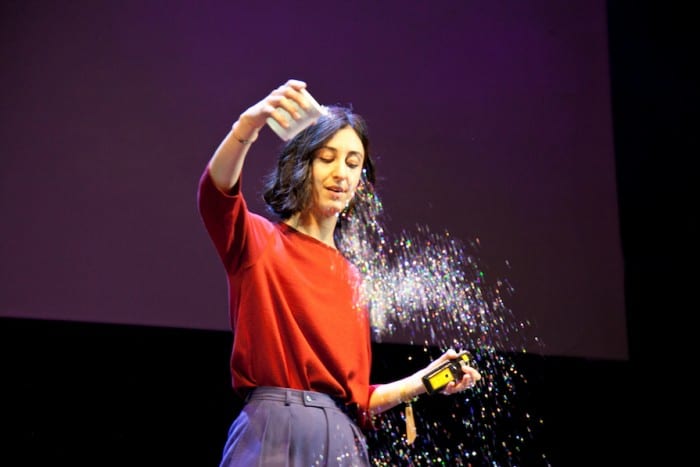
Simplicity
Humans want to feel included, but also appreciate not being bombarded by product overload. The role of creative people is to simplify all kinds of data to make it more accessible to the general public. In this way, design can change the world.
Antya Waegemann took up the challenge to simplify rape kits, in order to empower victims, get better evidence, and help medical staff who are not trained for it.
Jakob Trollbäck (pictured below) simplified the UN Sustainable Development Goals into icons and information that everyone can understand easily, effectively creating a ‘periodic table of elements’ addressing all the biggest global problems and solutions.
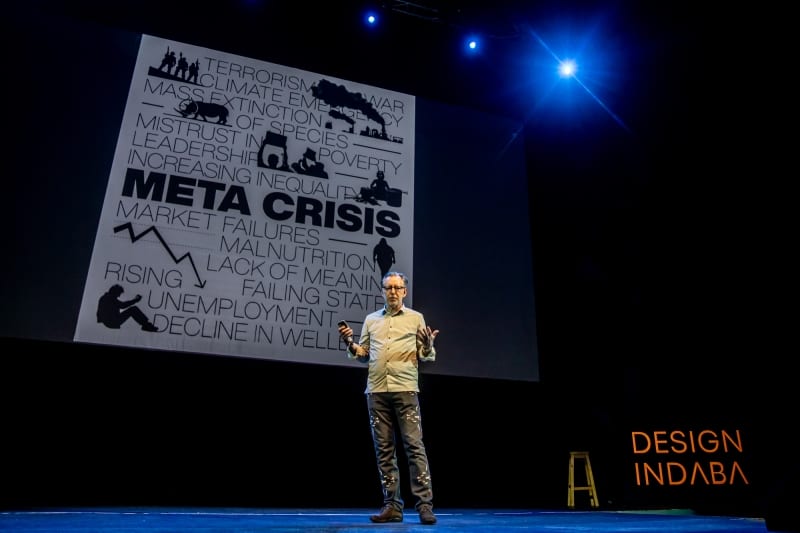
Both of these examples prove that simple designs are not easy, as you need to refine complex ideas or goals down to their essence.
Innovation
While all of the examples here are hugely innovative, some speakers specifically addressed this principle:
“We humans were not really designed to be in the floating world of space. But we don’t just want to survive there; we want to adapt and thrive there,” said Anna Talvi, a Royal College of Art MA graduate. She is designing anti-gravity fashion, which needs to accommodate the many physical changes and challenges that space inflicts on our human bodies.
Paul Cocksedge is a multidisciplinary designer, and shared some of the projects his design studio is responsible for. These include ‘The Vamp – Save a speaker’ campaign, a project intended to save vintage speakers from obsolescence by providing a tool to extend their lifespan; the undulating public installation in London, ‘please be seated,’ which can be used for public seating; and the concept of a bridge which will be built at the Upper Liesbeek River Garden in Cape Town, which has a multi-purpose design to benefit the local community.
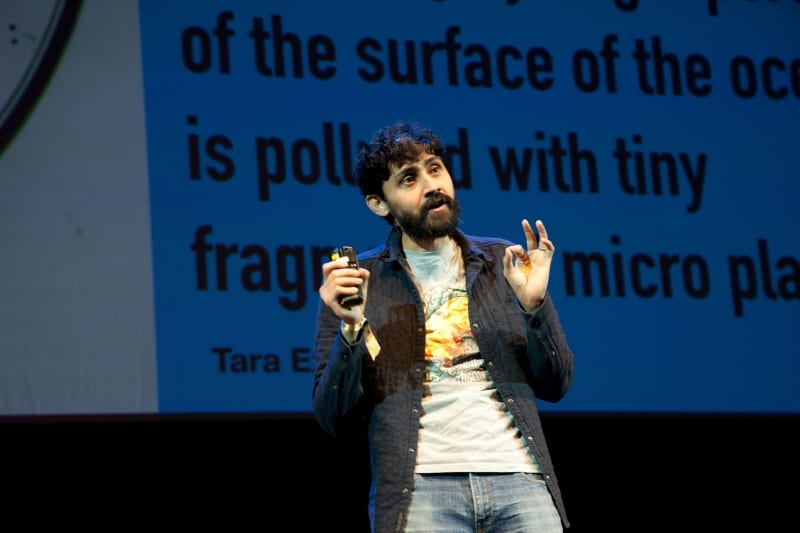
Manu Prakesh (pictured above) is a physical biologist who invented a paper microscope (the Foldscope) and paper centrifuge (Paperfuge). Both are inexpensive to make and use, which has allowed him to distribute them throughout impoverished countries where he has recruited volunteers (including kids) to help him collect data and build databases for his research.
Drift studio from Holland combined nature and art in an installation to comment on our instant and disposable culture. Individual dandelion seeds were stuck onto little LEDs one by one, producing an amazing dandelion light. The installations are a commentary on these opposite forces (technology and nature), and how they can work together.
Humanity
This theme ran through many of the talks given at Design Indaba, possibly because technology has in many ways removed or limited our sense of human connection, so the need for it feels more urgent than ever before. Some of the highlights included:
Bass Timmer is a fashion designer who spends his time creating shelter suits for the homeless. All materials are either donated or, in the case of the sleeping bag bottoms, repurposed (making use of all the discarded sleeping bags after music festivals).
Hanif Kara is a brilliant structural engineer and pointed out how crucial it is to hold on to our human emotions like truth, morals and a continuous search for beauty. We will never get these things through technology, and they are vital to produce good work.
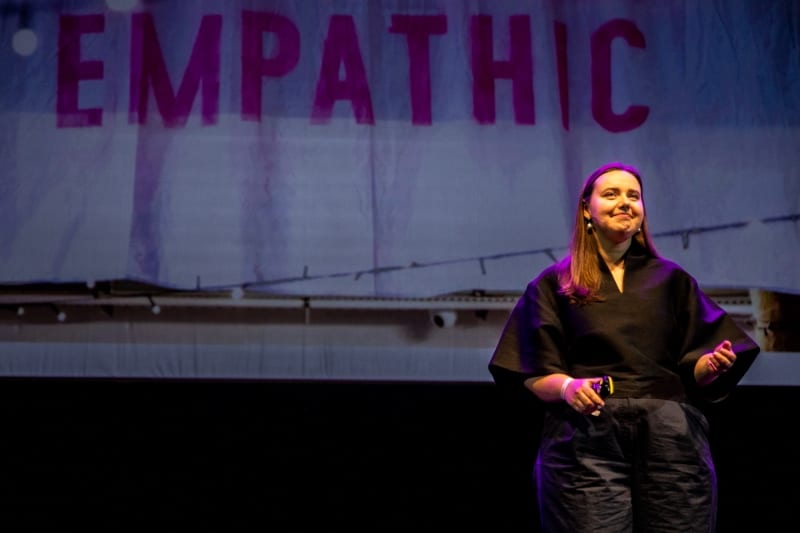
On a similar note Enni-Kukka Tuomala (pictured above), an empathy designer from Finland, spoke about how important it is to let people in and break down barriers in the work place. Power and stress reduces our ability for empathy, which hinders us in forming connections and identifying with others.
Robert Wong, creative director at Google Labs, took us through some of the amazing projects he’s been a part of. He reminded the audience of Google’s famous slogan ‘DON’T BE EVIL’, which was later updated to ‘DO THE RIGHT THING’, and to which ‘DON’T BE UGLY’ was later added. He reiterated how important ‘forging human connection’ is, as the driving force behind developing new technology. A good example is how adding closed captions to everything digital, including smart phones, will change the lives of anyone with a hearing impairment. They will be able to follow the complete narrative not just the dialogue in any given video.
Mazbahul Islam (pictured below) spoke about finding gaps in your local community to bring about change. After a medical emergency affecting close friends in his local village in Bangladesh, he realised that there was a dire need for low cost medical transport and care. Because of this their project, Safewheel was born, which converts tricycles or TukTuks into mini ambulances to deploy in rural areas.
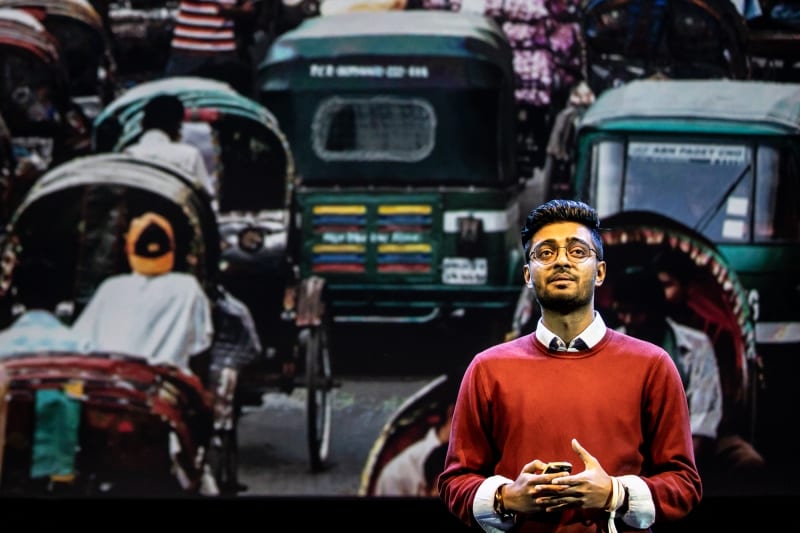
Ghanaian artist Ibrahim Mahama talked about how important it is to share your success to uplift the whole community rather than moving away when becoming successful. One of his projects is towing broken-down airplanes to his home town where he converts them into classrooms for the local kids.
Ultimately, designers play a pivotal role in helping people understand the world, while also impacting their lived experiences of the world. This is no less true at events, and all four of these lessons can be applied to business events such as meetings, conferences and exhibitions.
Images supplied by Design Indaba.




